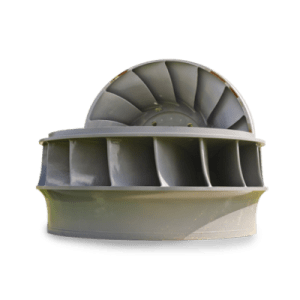
Overview
Students graph monthly quadratic data on solar radiation and use the evidence from the graphs to advise a homeowner about the times of day and months when the use of solar panels would provide the greatest reduction in electricity usage.
Instructions
What you'll need
- Digital projector and screen
- "Predicting a pattern" worksheet
- "The relationship between time and total solar radiation" handout
- "Gathering important mathematical evidence" worksheet
- "Monthly graphs" handout
- Organize your students into small groups and provide each student with a copy of the "Predicting a pattern" worksheet. Review the scenario described on the worksheet with your students, and invite them to suggest the times of day and months of the year the homeowner should use the solar panels to reduce electricity usage the most. Invite groups to share their decisions and thinking with the class.
- Direct students’ attention back to the worksheet, and ask groups to now create a graph to show their initial thinking about the relationship between time of day and the intensity of sunlight.
- Provide each group with a copy of the "The relationship between time and total solar radiation" handout, and each student with a copy of the "Gathering important mathematical evidence" worksheet. Assign each group one of the months.
- Ask groups to graph the monthly data from their assigned month using appropriate graphing technology. After groups have graphed their data, ask them to record the information for their assigned month on the "Gathering important mathematical evidence" worksheet.
- Invite groups to share their graphs and worksheets with the class using one of the following methods:
- Transfer their graphs and worksheet data on whiteboard or chart paper
- Share their electronic graphs and worksheet data using a projector
Provide time for students to view and record the information for other months on their "Gathering important mathematical evidence" worksheet.
- Encourage students to identify any patterns that might be noticed across the monthly representations and the data. Invite students to revisit their initial graphs and advice to the homeowner: what would they change given these patterns?
- Working as a class, name the graphs as quadratics and discuss the general features of a quadratic function, introducing key mathematical vocabulary (e.g., vertex, max/min, x-intercepts, symmetry).
- Guide students’ attention to bottom of "Predicting a pattern" worksheet. Invite students to note their final advice to the homeowner using their new learning and the mathematical evidence they have gathered. Invite students to share their advice with the class: What stayed the same? What changed?
Modify or extend this activity
- Provide students with the equations for each quadratic function and ask them to match the equations to the most appropriate graph. Remind students that the properties of a quadratic are simply any characteristics that hold true across a given set of examples.
- Provide students with the graphs of each function with and without restrictions and ask them which is most appropriate given the context of the problem.
- Invite students to sketch a graph using the tables of value so that they pay closer attention to numerical values and are better able to identify the emerging patterns.
- Your students’ final advice to the homeowner could be offered as an “exit slip” and evidence of learning.
Curriculum Fit
Foundations of Mathematics 11
Big idea
- Optimization informs the decision-making process in situations involving extreme values
Content
- Graphical analysis (using technology only)
- Quadratic functions (characteristics including end behaviour, max/min; vertex; symmetry and intercepts)
- Optimization (maximizing and minimizing quantities in authentic contexts)
Suggested curricular questions
- Can we think of a story where conflict can be resolved through optimization?
- How can mathematics help us make decisions regarding the best course of action?
- What factors influence the decision-making process when determining an optimal solution?
- How do graphs aid in understanding a situation that is to be optimized?
Curricular competencies
Reasoning and modelling
- Explore, analyze, and apply mathematical ideas using reason, technology, and other tools
- Estimate reasonably and demonstrate fluent, flexible, and strategic thinking about numbers
- Model with mathematics in situational contexts
- Think creatively and with curiosity and wonder when exploring problems
Understanding and solving
- Develop, demonstrate and apply mathematical understanding through inquiry and problem-solving
- Visualize to explore and illustrate mathematical concepts and relationships
Communicating and representing
- Use mathematical vocabulary and language to contribute to discussions in the classroom
- Explain and justify mathematical ideas and decisions in many ways
- Represent mathematical ideas in concrete, pictorial, and symbolic forms
Connecting and reflecting
- Reflect on mathematical thinking
- Connect mathematical concepts with each other, other areas, and personal interests
Assessments
Throughout the activity, consider how well students:
- Identify general patterns to construct understanding of the properties of the given set of quadratic functions.
- Identify more specific patterns to construct understanding of the availability of solar energy.
- Analyze graphs to provide sound mathematical advice to the homeowner.
- Determine the potential solar radiation output, solar radiation start and end points and patterns.
- Use appropriate vocabulary (max/min; x-intercepts; vertex; symmetry) to make recommendations.
- Refine and extend their thinking throughout the lesson
- Pay close attention to appropriate details.
Teaching Notes
- Ensure students recognize the necessary restrictions placed on graphs, tables of value, and equations within real world contexts.
- The "Monthly graphs" handout shows 12 graphs of quadratic functions (with and without restrictions), along with the equations in x-intercept form--y = a (x-b) (x-d), that align to the tables of value given above.
Solar power in B.C.
Solar energy is an affordable alternative energy that can be used to help heat and power your home, school, or business. However, there are some important considerations around the use of both solar photovoltaic and solar thermal systems in British Columbia that you should be aware of. Check out bchydro.com for more information regarding the practicality of solar energy in our province.







